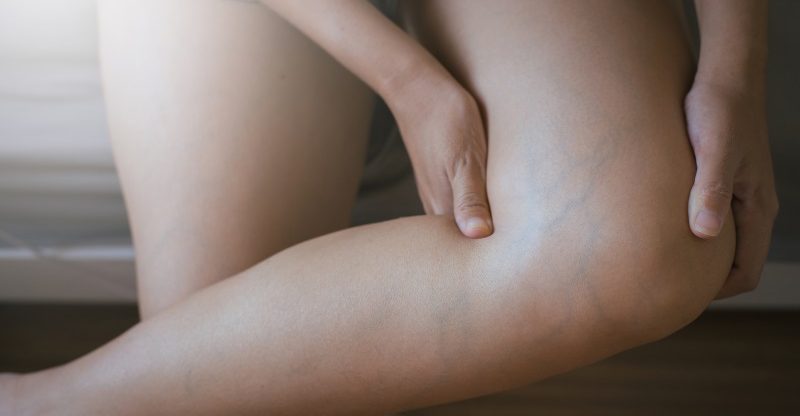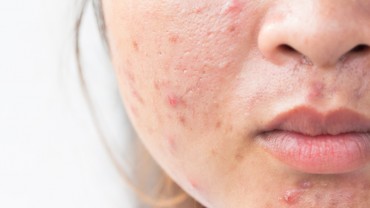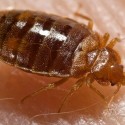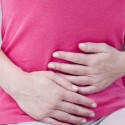8 Proven Varicose Veins Natural Treatments
As you age, there are many new challenges you must face and decide how you want to address.
In addition to graying hairs and sagging skin, you will likely also start to notice the appearance of varicose veins.
It doesn’t seem fair that even our legs age, does it?
However, at least half of all Americans over the age of 40 will develop varicose veins in their life.
From tiny spider veins to full-blown varicose veins, not only are these unsightly and often unwanted additions to your appearance.
They can also be a sign that your circulation is starting to slow down, and you may be at risk for other health problems.
Learning to prevent varicose veins is very important.
However, once you start to notice them appear, there are many things you can do to treat them and help reduce their appearance.
Not everyone understands what causes varicose veins or their symptoms.
Therefore, we will tell you everything you need to know about this condition.
We will then share with you the best natural treatments and prevention techniques that can allow you to keep your legs healthy and looking good.
Understanding Varicose Veins
There are two types of passageways that circulate your blood within your body.
Arteries carry oxygen-rich blood away from your heart.
Veins, by contrast, return your oxygen-depleted blood back to your lungs and heart.
Veins work much harder than arteries.
This is because they are working against gravity to pump blood from your extremities back to your core.
Veins cannot rely on the pumping action of your heart to propel your blood.
Your blood flows through your veins, due to the rhythmic contraction and relaxation of the muscles that surround your veins.
They work in conjunction with several valves, which control the blood flow to your heart.
Within the inner wall of each vein, you have various valves that close temporarily following each heartbeat.
This prevents your blood from flowing backward while waiting for the next heartbeat.
Over time, various disorders, health conditions and aging cause some of these valves to malfunction or weaken.
When this happens, blood no longer flows as it should.
As a result, it can accumulate in your veins.
This causes the wall of the vein to bulge and stretch, as they are inflamed and swollen.
This is what is known as varicose veins.
The Causes of Varicose Veins
Now that we understand the mechanism that makes varicose veins appear, we need to understand what causes these valve failures.
This will allow us to prevent and treat them.
Individuals with a family history, are more likely to develop them as they age.
Other risk factors for developing varicose veins include being obese, hormonal imbalances, eating a diet too low in fiber, nutritional deficiencies, lack of exercise and liver disease.
Sitting or standing for extended periods also contribute to their development.
The Symptoms of Varicose Veins
In addition to the appearance of blue or purple lines on your legs, varicose veins have many other, more severe symptoms.
Veins can become swollen, causing them to feel tender and painful.
Your legs can also feel swollen or fatigued.
Bruising and dry or itchy skin are common near the varicose veins, and you can even develop ulcers over the veins.
Preventing Varicose Veins
The best thing that you can do to protect your vein health and keep your legs clear of varicose veins, is to prevent them from forming.
To boost your circulation and keep your blood flowing smoothly, we have some tips for you.
Here are the top five ways to prevent varicose veins:
- Stay Active. Keeping the muscles in your legs strong and healthy is essential for circulatory health. Staying active keeps your blood flowing and prevents the build-up of blood in your legs.
- Eat a healthy diet. Consuming whole, plant-based foods and foods rich in omega-3 fatty acids are good for your heart, as well as your veins. Reduce your intake of refined sugars, fats, and processed foods to keep your blood flowing smoothly.
- Drink lots of water. Staying hydrated is essential for healthy veins and circulation.
- Exposure to the sun is important for vein health. The lining of your arteries and veins responds to the sun’s rays, so be sure to spend some time enjoying a few rays.
- Be sure to get enough sleep. Rest helps your body rejuvenate and prevents stress, which can raise blood pressure.
Naturally Treating Varicose Veins
You can naturally treat your varicose veins using diet and lifestyle changes, as well as harnessing the power of natural compounds.
When you are managing your disorder, be sure to observe your varicose veins.
If they become tender, warm, red, or swollen, you should see your doctor.
You can also develop a blood clot, which can become a life-threatening situation.
There are many natural remedies that can effectively reduce the swelling, pain, and appearance of varicose veins.
Several of these treatments can even strengthen your veins and halt the further development of this condition.
Here are our favorite natural therapies.
Dietary Changes to Support Vein Health
You can change your diet in several key ways to improve your varicose veins.
The first change is to eat more foods that are rich in flavonoids.
These compounds improve circulation and keep your blood flowing, which prevents the pooling that results in these noticeable veins.
Flavonoids also reduce blood pressure and relax blood vessels, which can reduce the inflammation of the affected veins.
Foods that are high in this important compound are usually red or purple in color.
Healthy food options include beets, berries, peppers, cherries, and chard.
Buckwheat is a rich source of rutin, which is a flavonoid that boosts capillary strength.
Another vital component of a vein-healthy diet is fiber.
When you eat too little fiber, you can become constipated and you can develop varicose veins from straining to move your bowels.
Eating plenty of dietary fiber from fruits, vegetables, whole grains, seeds, and nuts will help keep your digestive system healthy and allow you to stave off vein issues.
Drinking plenty of water helps keep your blood volume high, which prevents your blood from becoming sluggish and difficult to move.
Other healthy foods that are also great for promoting circulation include onions, garlic, ginger, cocoa, citrus fruits, and cayenne pepper.
Your body needs plenty of potassium for proper vein health.
Almonds, pistachios, bananas, white beans, lentils, potatoes, and leafy vegetables are all excellent sources of potassium.
You also need plenty of magnesium to regulate your blood pressure and prevent pooling and leg cramps.
Foods like bananas, avocado, sweet potatoes, and leafy greens are excellent sources of this mineral.
Increase your intake of omega-3 fatty acids, which improve your overall heart health and keep arteries and vessels from becoming clogged.
Wild fish like tuna, salmon, anchovies, and mackerel are excellent sources of omega-3s.
Drinking a small amount of apple cider vinegar regularly can help improve circulation, as well as lower inflammation.
You can even rub apple cider vinegar, either on its own or mixed with witch hazel, directly onto varicose veins to improve their appearance.
Use Horse Chestnut Extract
One of the most popular natural treatments for varicose veins is horse chestnut.
The herb, which is also known as Aesculus hippocastanum, is rich in aescin, a compound that effectively protects veins from enzymes that cause damage.
The active compound aescin is effective at constricting, tightening and shrinking blood vessels.
Horse chestnut extract is used to treat varicose veins, as well as chronic venous insufficiency.
Standardized horse chestnut extract should contain 100 milligrams of aescin and can be taken once per day.
Use Herbal Remedies
In addition to horse chestnut, other herbs also have vasoprotective and other properties that can help you treat your varicose veins.
If you want to strengthen your valves and veins, these are excellent options for treatment.
- Cayenne pepper is rich in flavonoids, as well as Vitamin C. It also stimulates the formation of collagen in the walls of your veins. Cayenne also lowers inflammation. Use cayenne in a cream form directly on the affected vein, or you can take cayenne capsules.
- Butcher’s broom extract improves the efficiency of your vein’s functions and stimulates the production of natural steroids, which keep veins resilient. You can increase circulation and lower inflammation with this herbal remedy.
- Grape seed extract can help to reduce the swelling in your legs and to improve your varicose veins.
- Calendula can help with varicose veins that are inflamed, itching or irritated. This herb reduces pain and improves circulation. Apply oil infused with calendula directly to the veins.
- Bilberry is a powerful antioxidant that can protect, as well as strengthen blood vessels and capillaries. Bilberry is used to lowering blood pressure, improve the structure of vein walls and dilate blood vessels.
- Gotu kola may be less familiar, but this herb has triterpenoids that improve blood flow and strengthen the integrity of the vein’s walls. It also lowers inflammation and improves circulatory efficiency.
- Pine bark extract is our final recommendation since it is high in phenolic acids and flavonoids. Store the strength and elasticity of your varicose veins with this herb.
Wear Compression Stockings
Applying pressure to your legs with compression stockings can help the muscles and veins in your legs move blood more efficiently to your heart.
For best results, wear knee-high stockings that supply pressure between 18 and 21 millimeter of mercury (mmHg).
This can reduce your pain and improve your circulation.
Apply Witch Hazel
As a natural astringent, witch hazel is excellent for treating varicose veins.
You can apply witch hazel directly to your legs to shrink visible veins, as well as to tone and tighten.
Witch hazel is also helpful in addressing itchy skin and pain.
Use a cotton square to apply witch hazel in a gentle, upward motion.
Repeat two to three times per day.
Elevate Your Legs
Elevating your legs, so that they rest at or above the level of your heart, can improve your circulation.
Elevating legs reduces the pressure on your leg’s vein and helps your blood flow back to your heart efficiently.
If you sit for extended periods, elevating your legs periodically is an excellent way to prevent future vein problems.
Massage Your Body
If you want to keep the blood flowing well throughout your veins, you can massage your legs.
Use massage oils or a moisturizer and rub gently for at least 20 minutes.
Do not press directly on the varicose vein.
This can worsen the problem.
Maintain a Healthy Weight
If you are overweight, you are much more likely to have varicose veins.
When you carry excess weight, you are putting even greater pressure on your circulatory system.
Being overweight raises inflammation, particularly in your farthest extremities.
Those who are extremely obese are also less likely to notice varicose veins or to treat them before they become inflamed and problematic.
Conclusion
Varicose veins are the result of weakened vein walls that bulge and swell when blood pools or collects in your legs.
This is usually caused by poor circulation issues, other medical conditions, being overweight, or having a poor diet.
Many people with varicose vein have a family history of the disorder.
Most of the time, varicose veins are merely unsightly marks on the legs.
However, they can also be painful, tender, and even warm to the touch.
They can cause discomfort if left untreated.
You can treat your varicose veins naturally using some simple changes to your diet and lifestyle.
Other natural treatments include horse chestnut extract, other herbal remedies, witch hazel, compression stockings, elevation, and massage.
Maintaining a healthy weight is also important for treating and preventing varicose veins.
You can prevent varicose veins by eating a healthy diet, staying physically active, drinking plenty of water, getting enough rest and spending occasional time in the sun.
If your varicose veins are severe or painful, you should seek medical treatment.
Your doctor can help you explore all options, including using natural treatments in conjunction with more traditional therapies.
FDA Compliance
The information on this website has not been evaluated by the Food & Drug Administration or any other medical body. We do not aim to diagnose, treat, cure or prevent any illness or disease. Information is shared for educational purposes only. You must consult your doctor before acting on any content on this website, especially if you are pregnant, nursing, taking medication, or have a medical condition.
HOW WOULD YOU RATE THIS ARTICLE?





